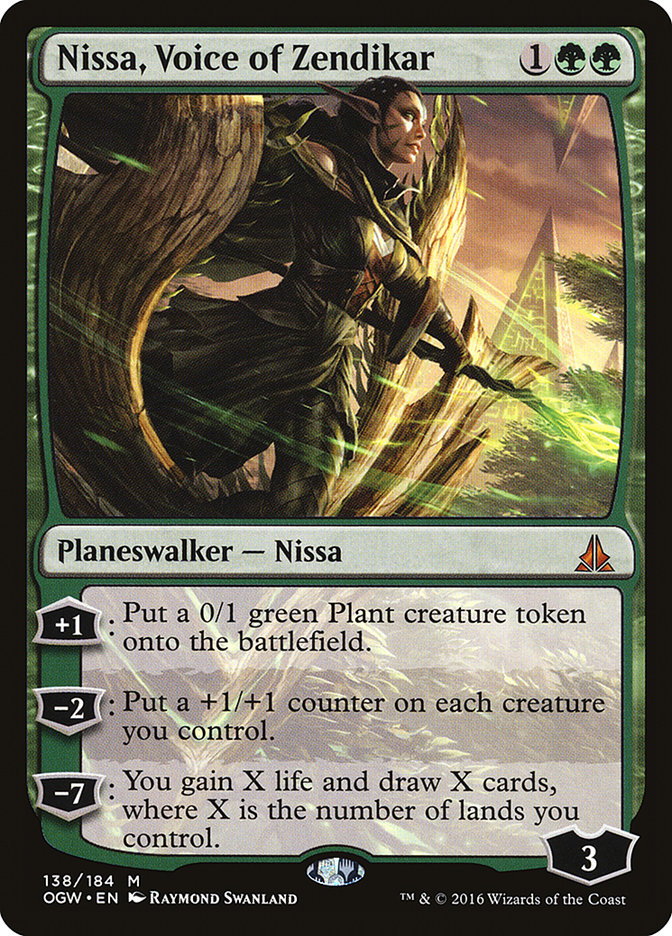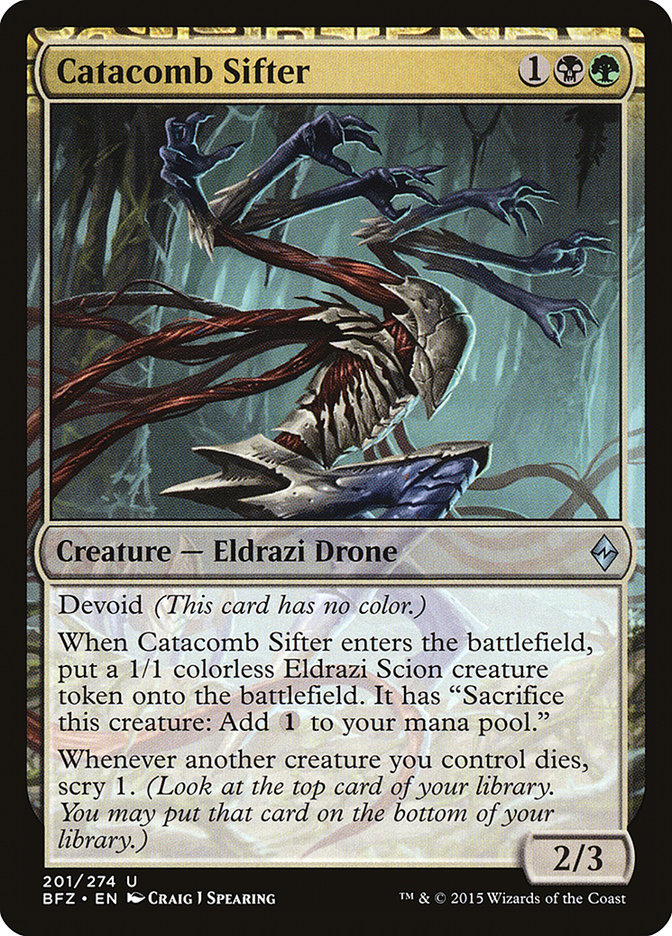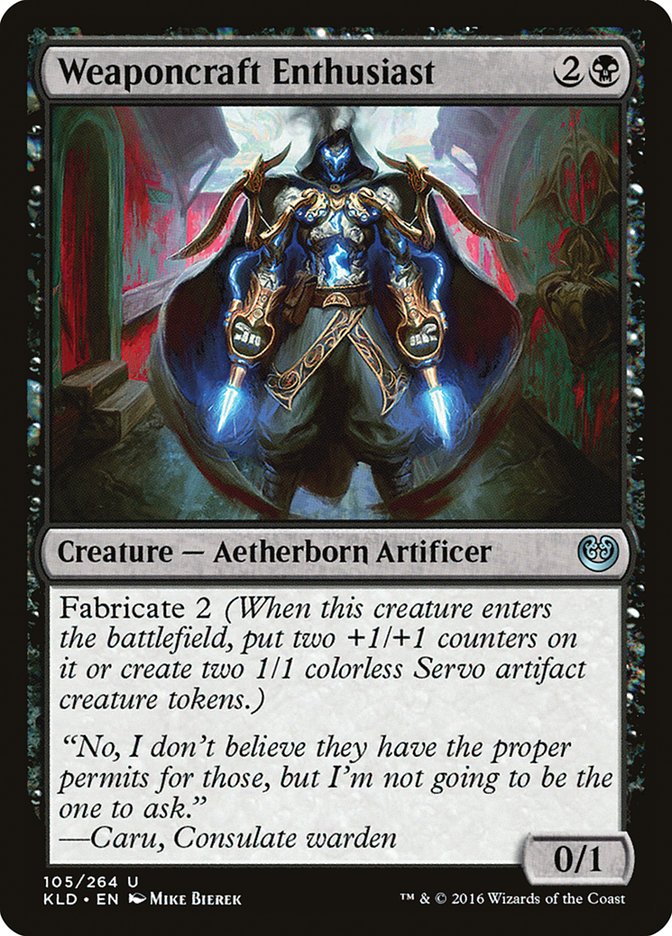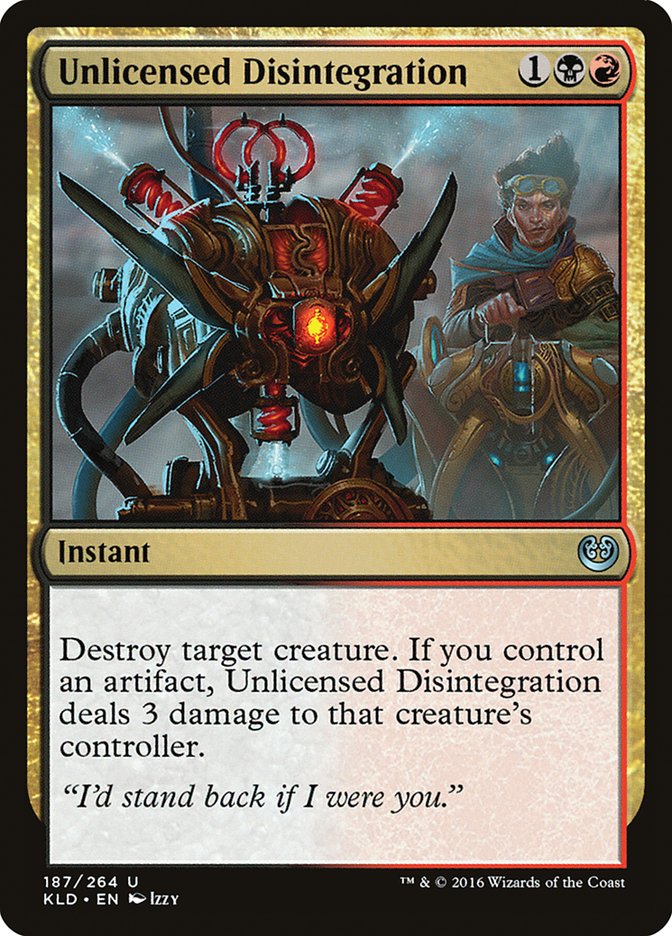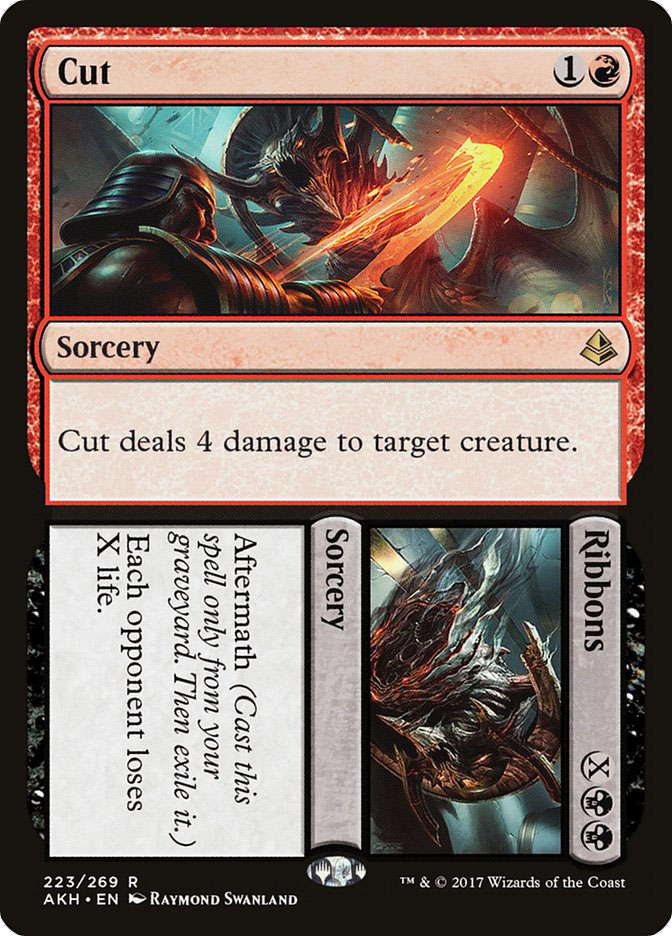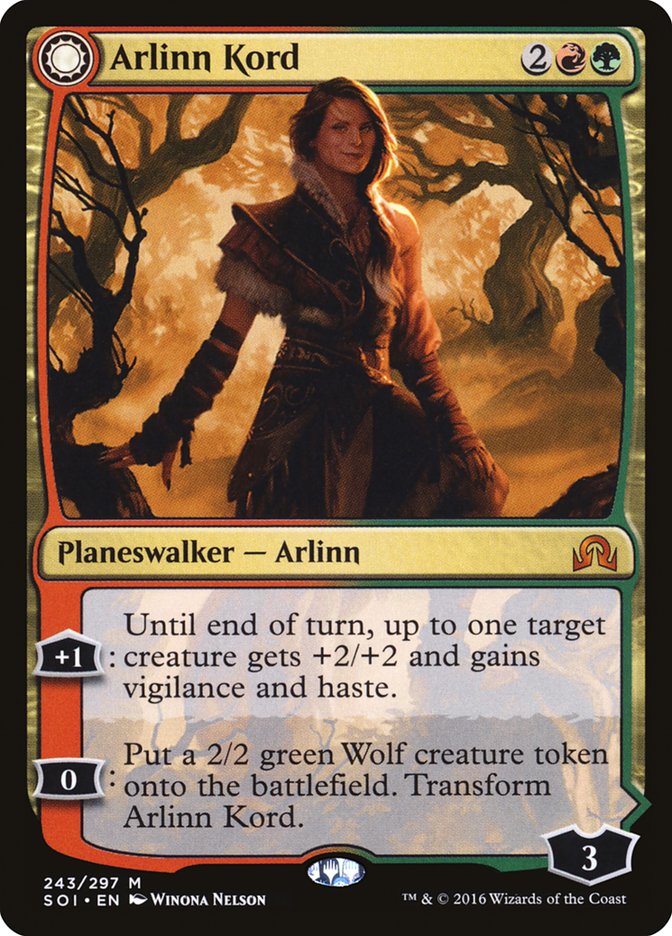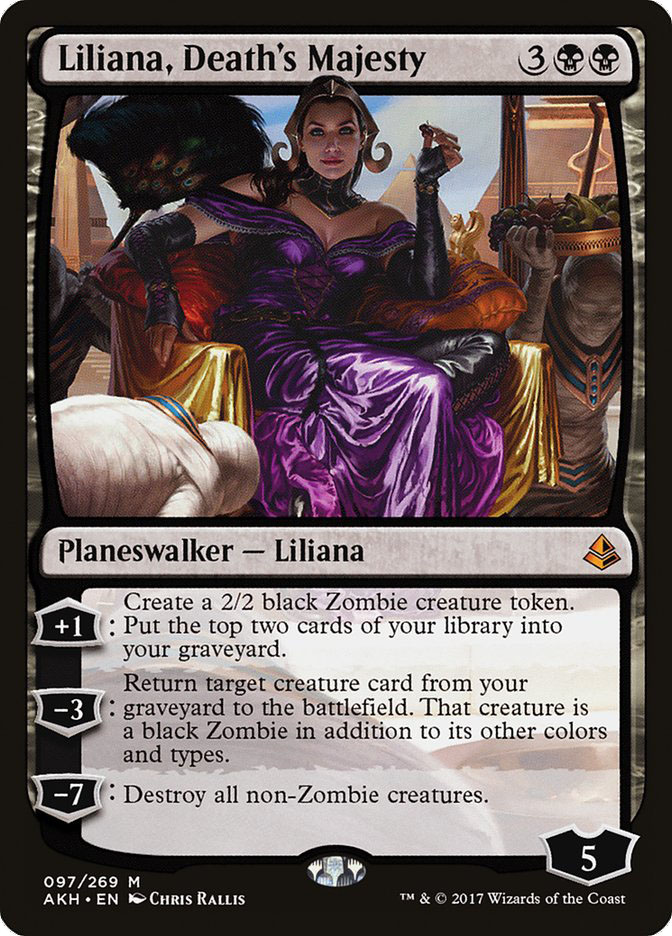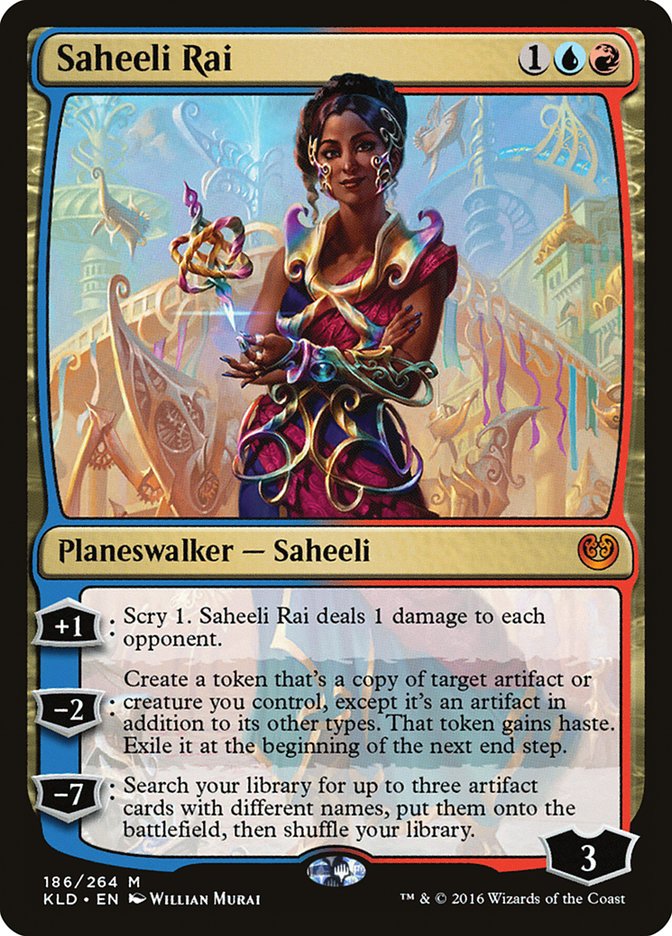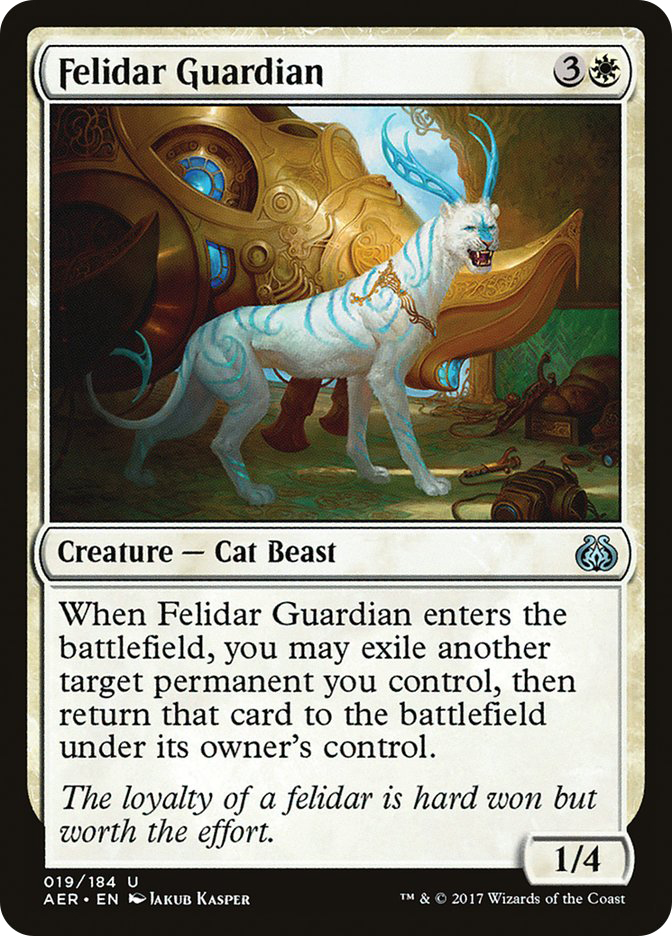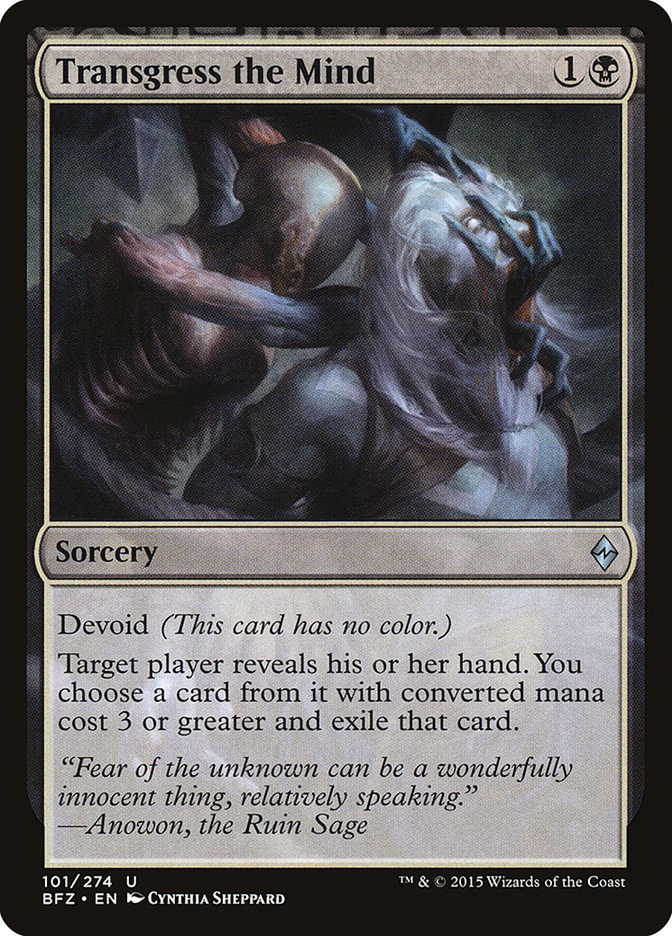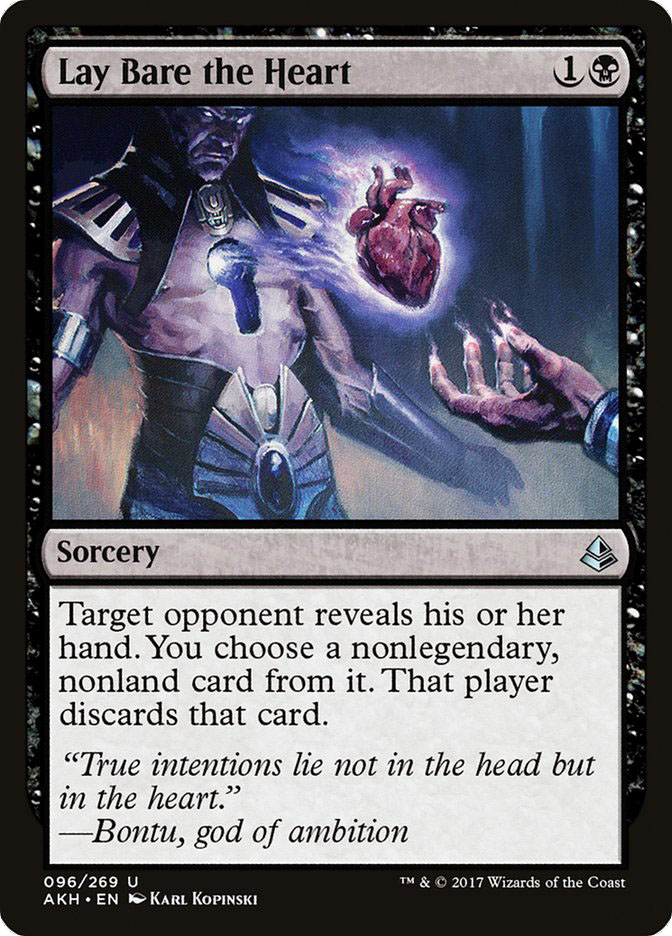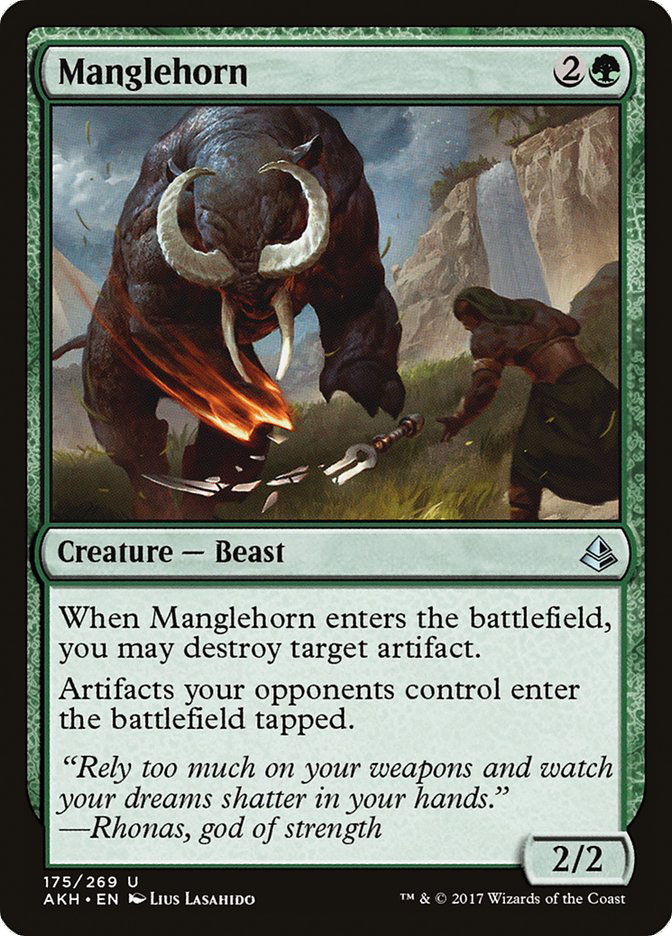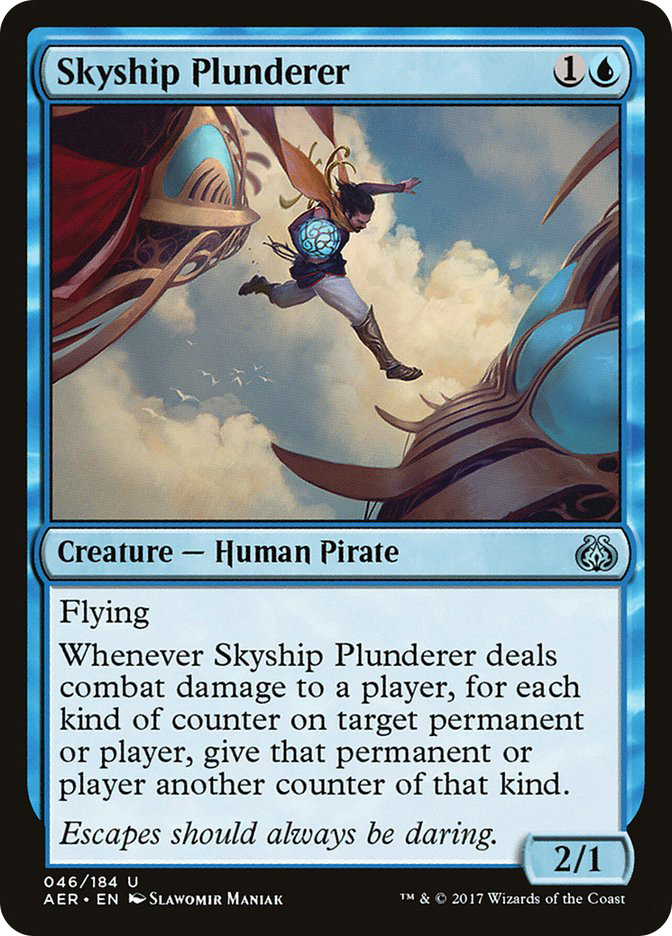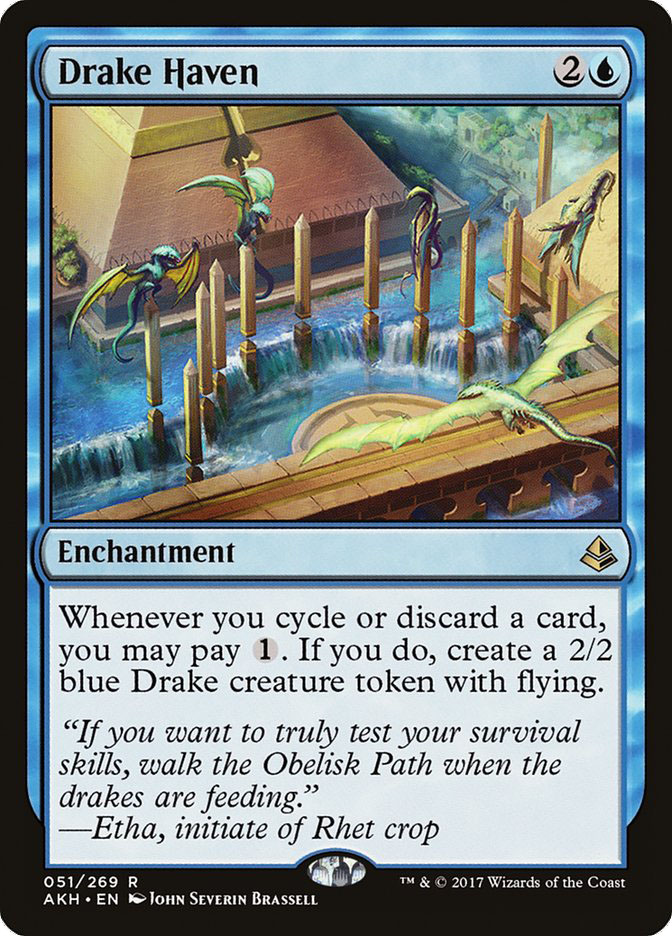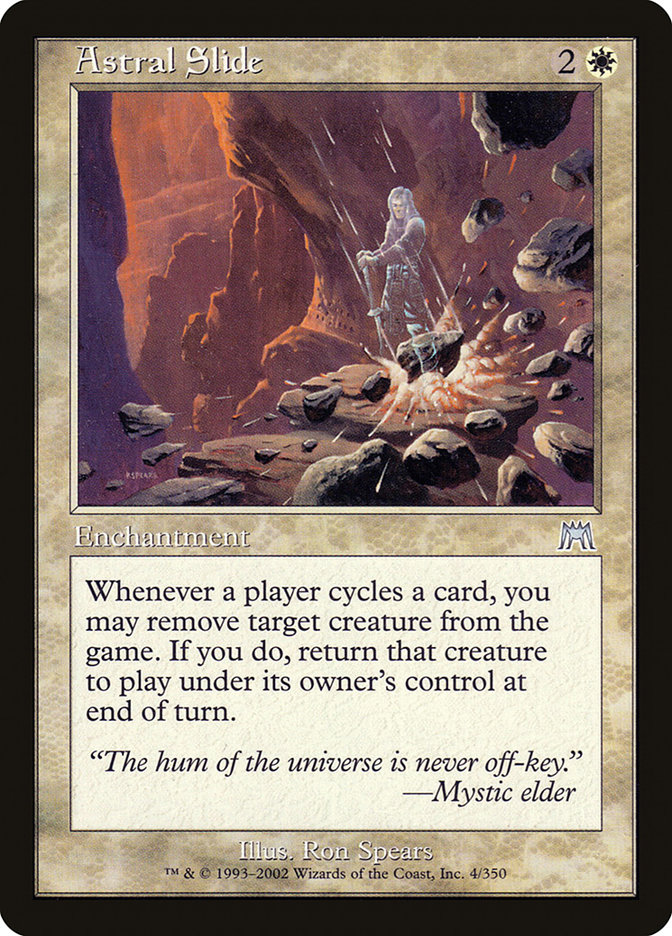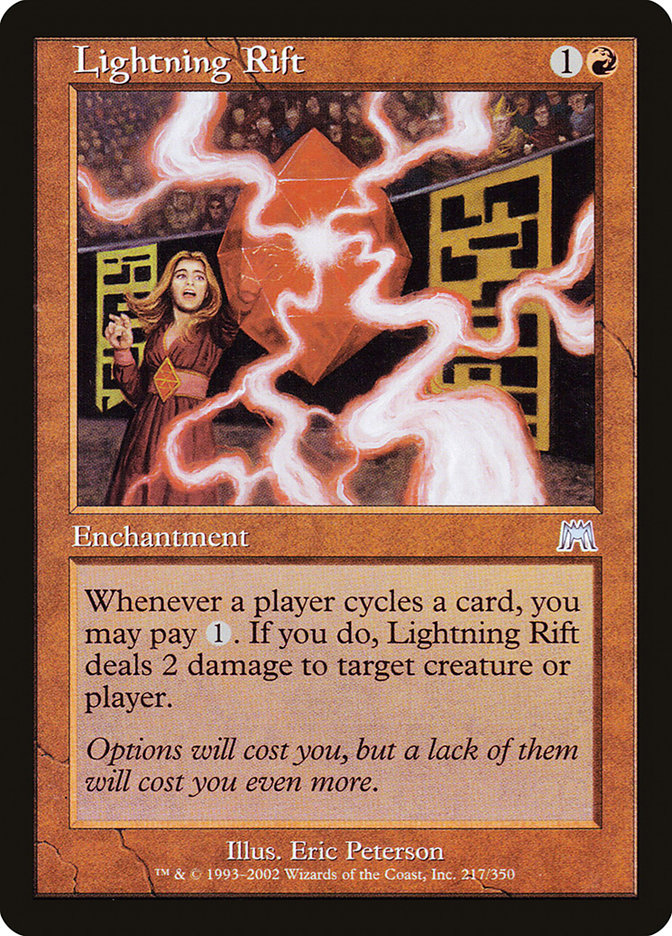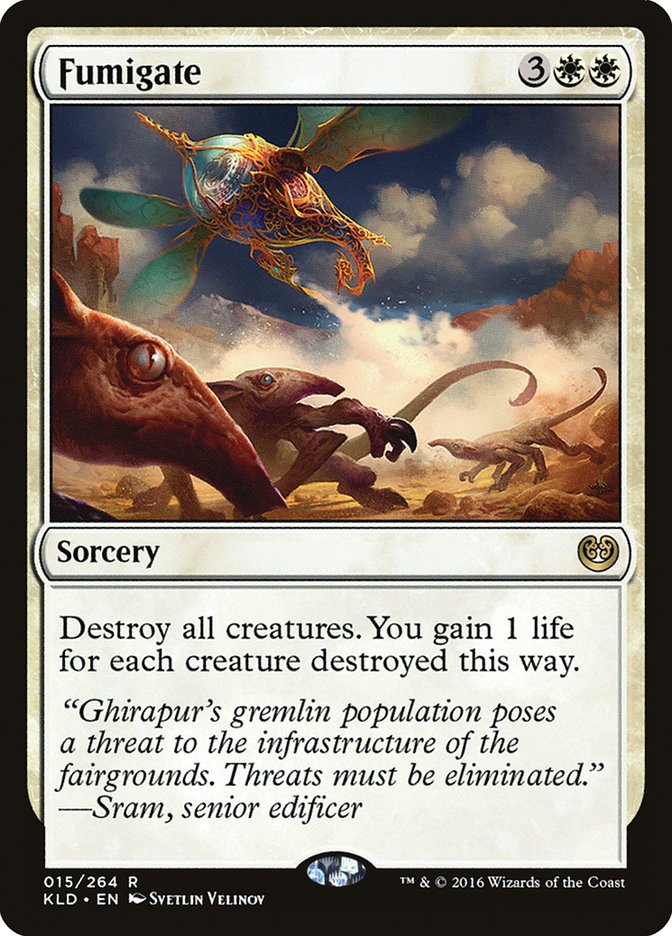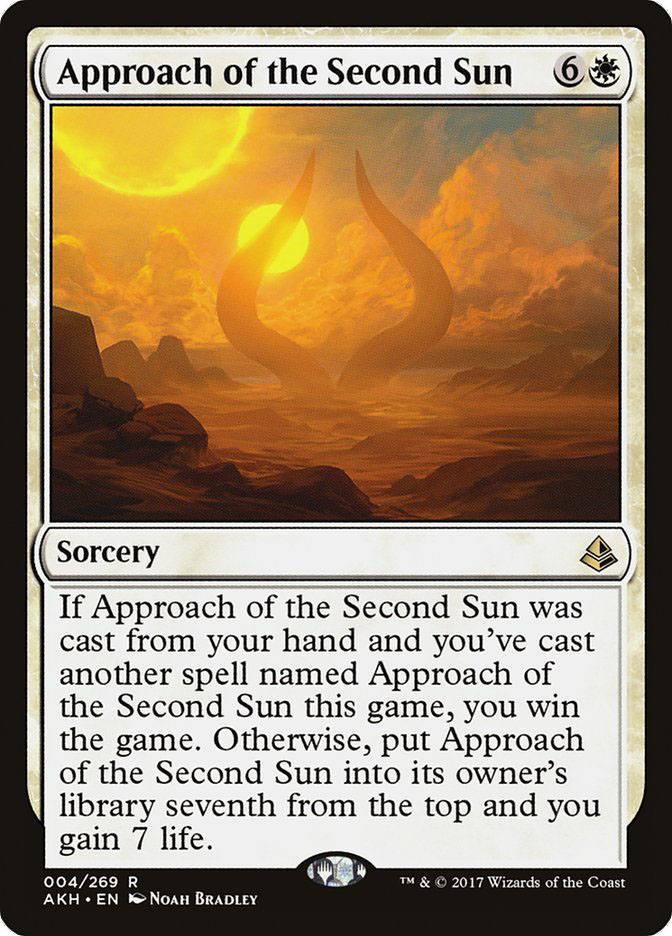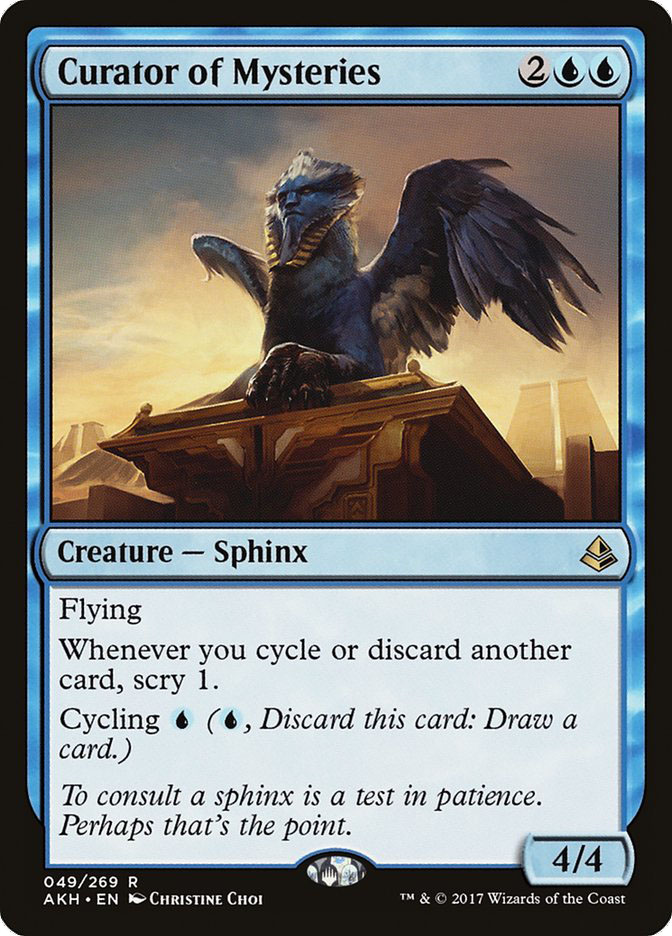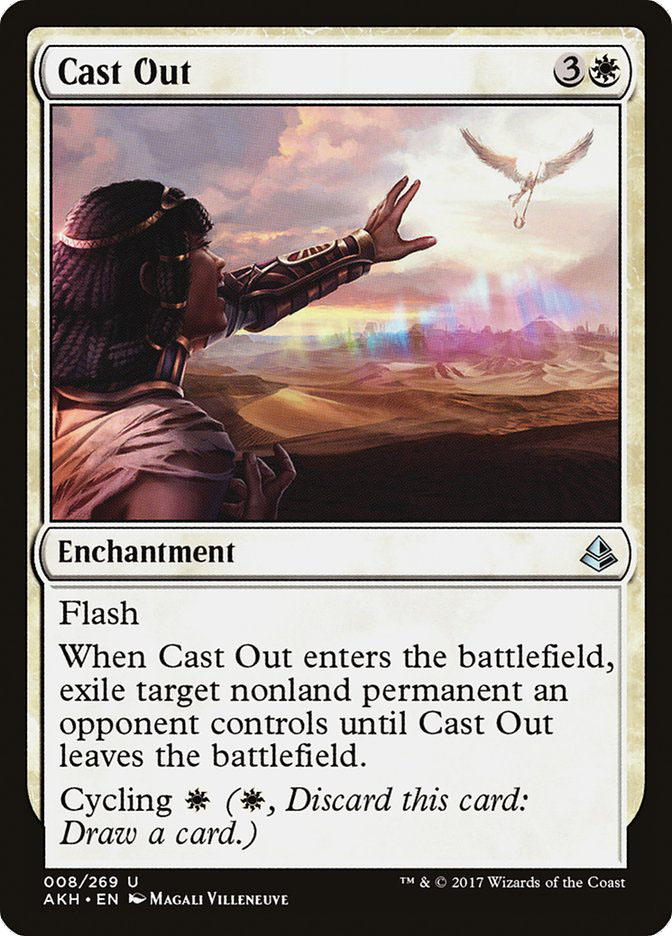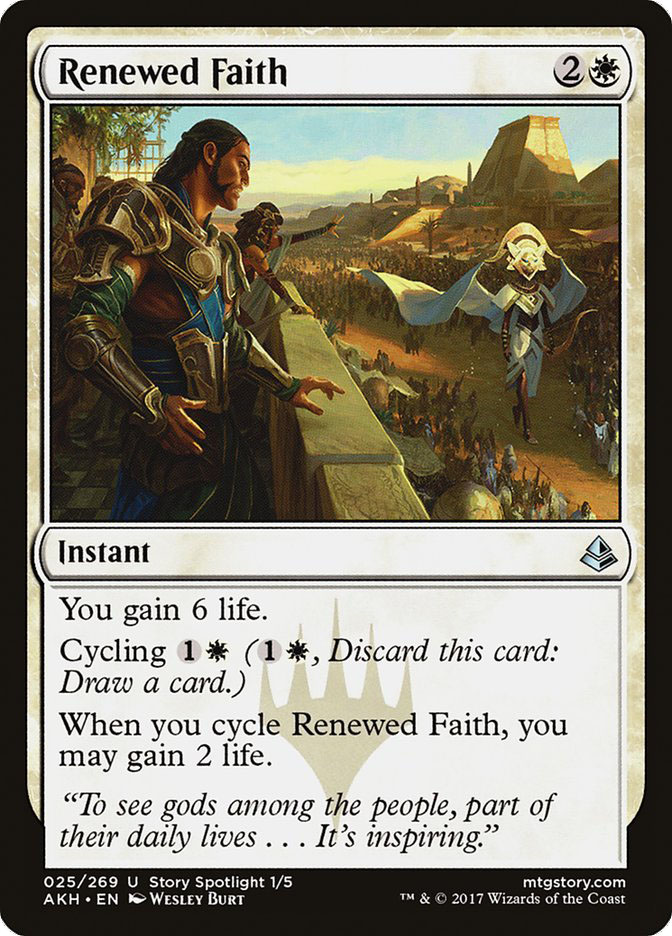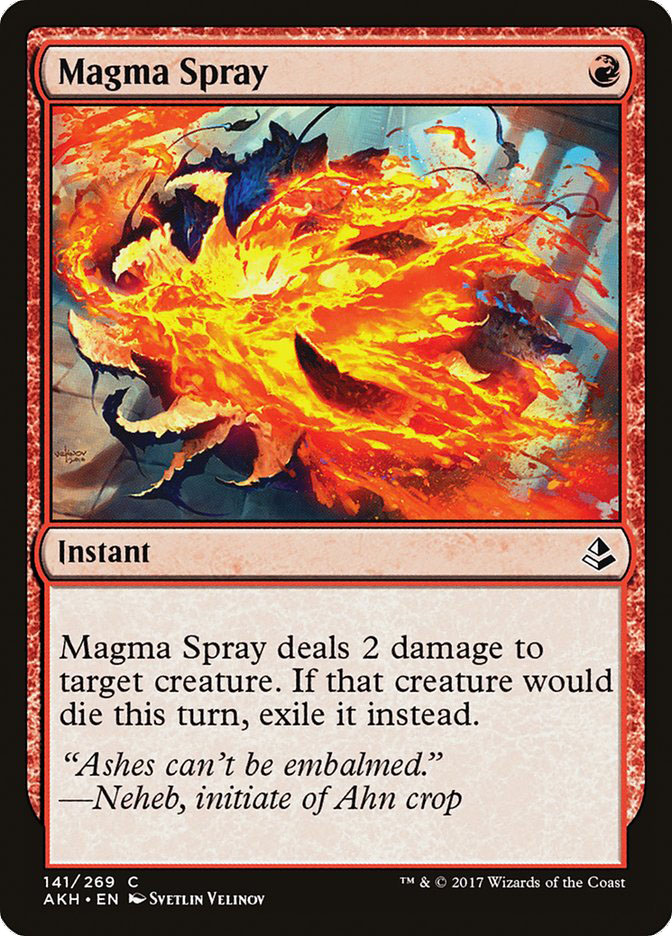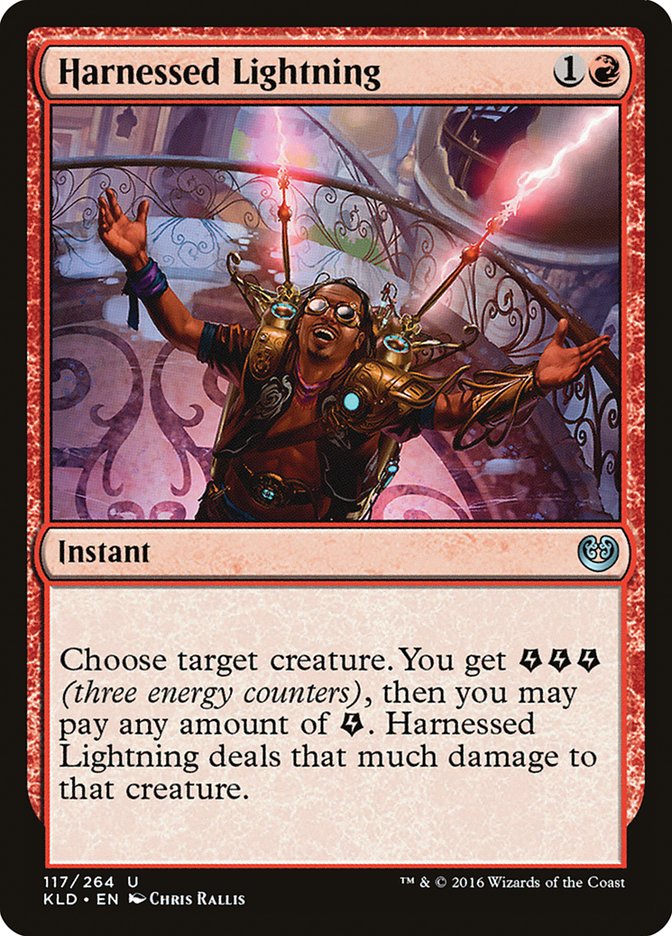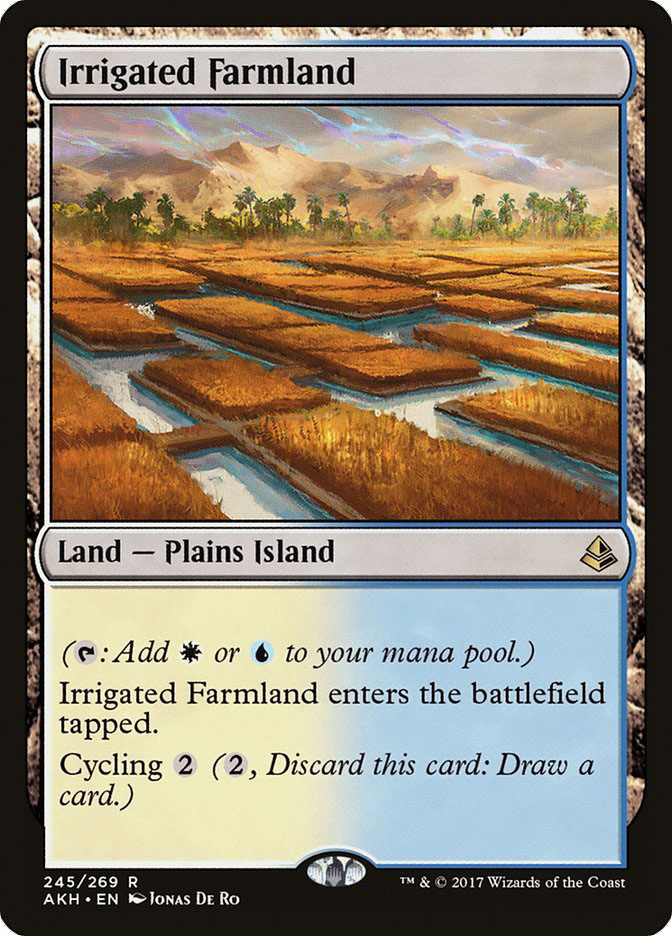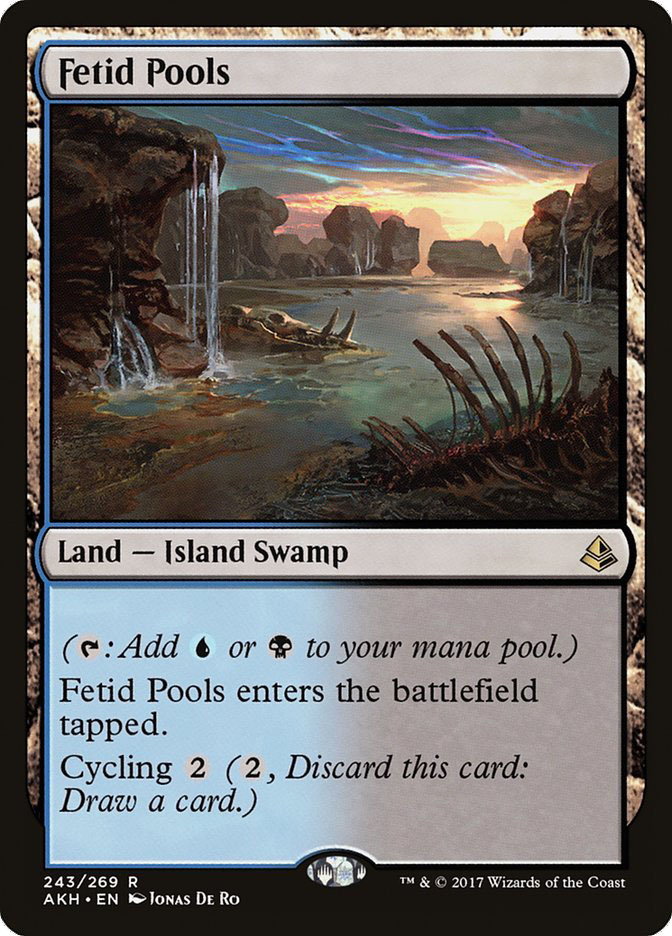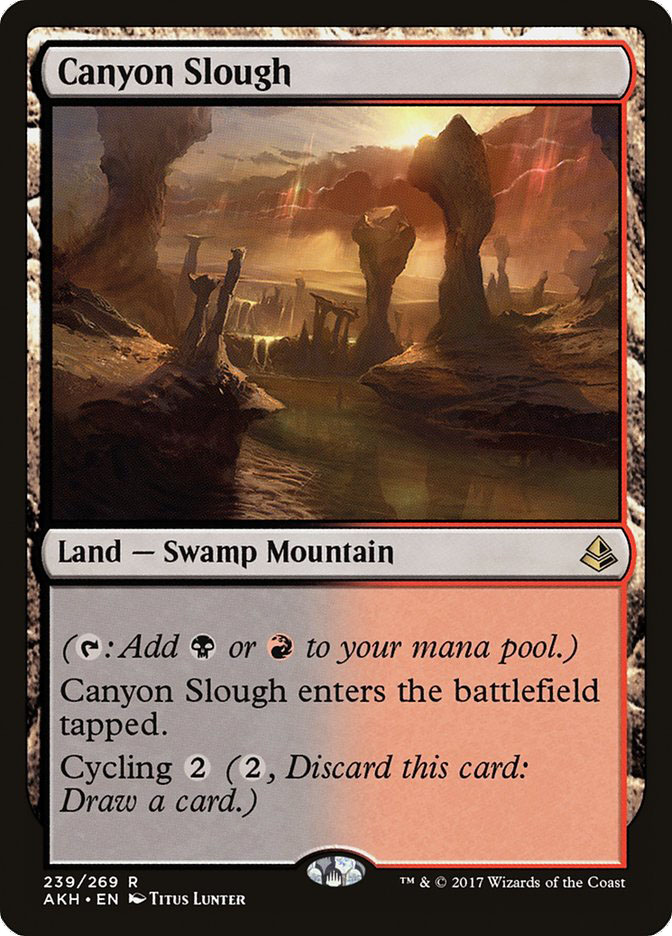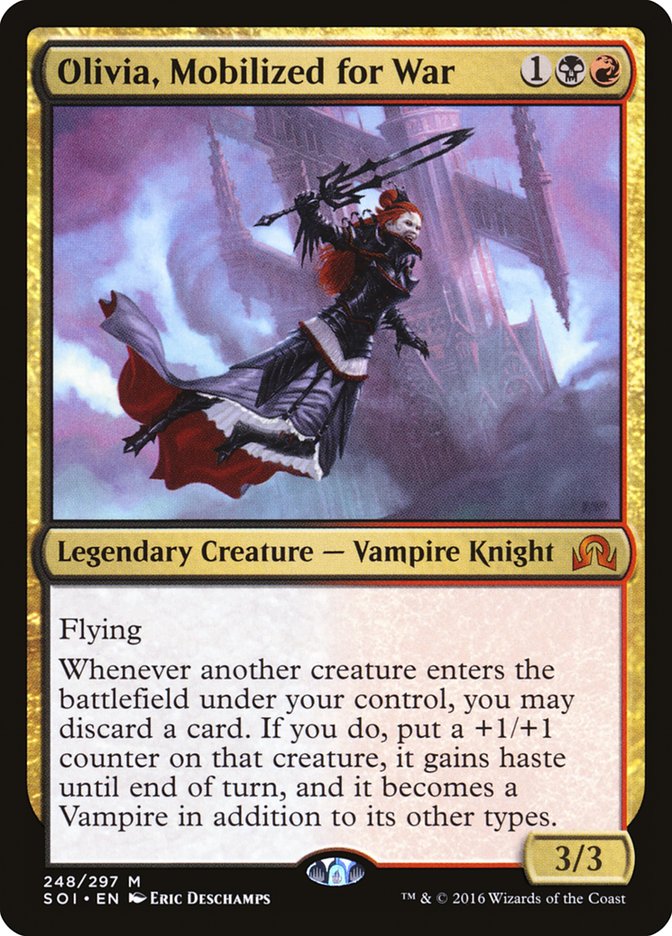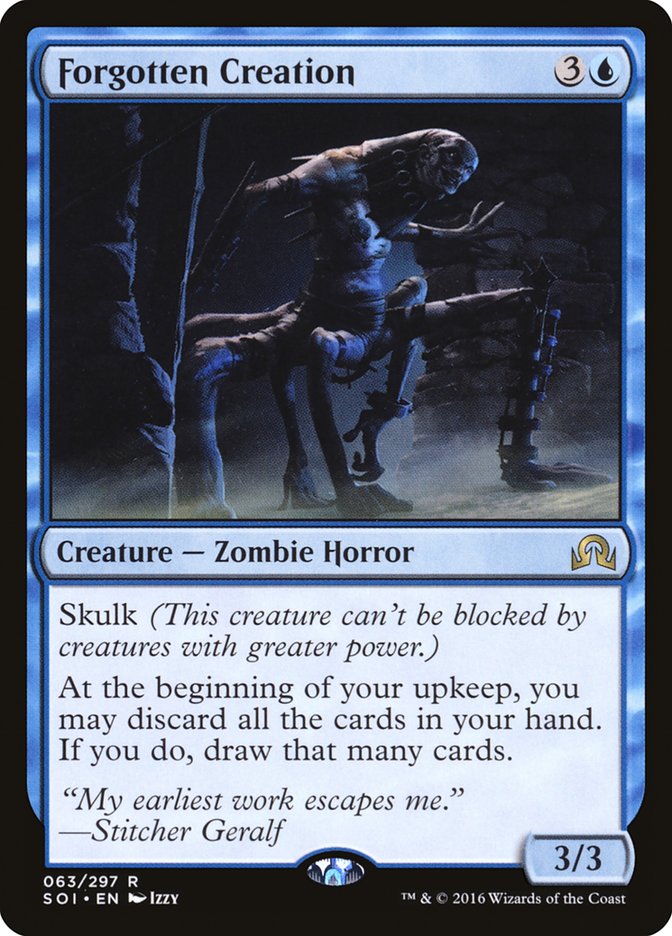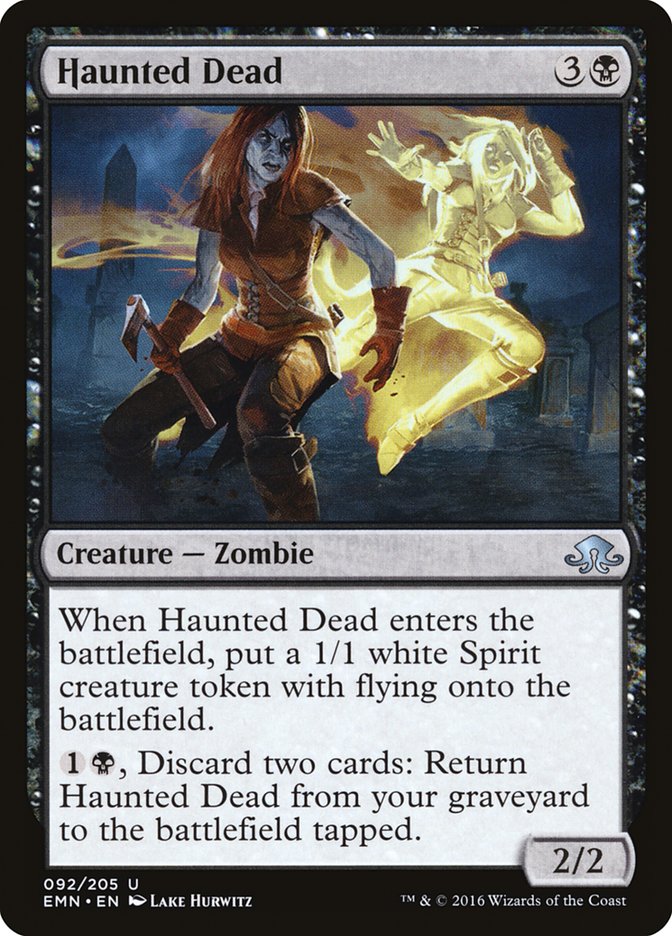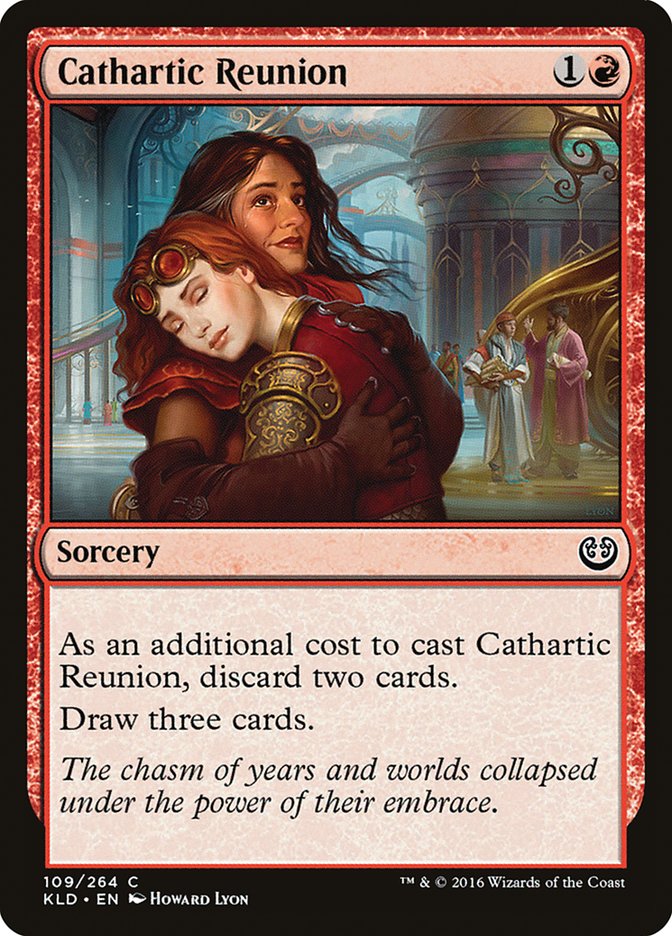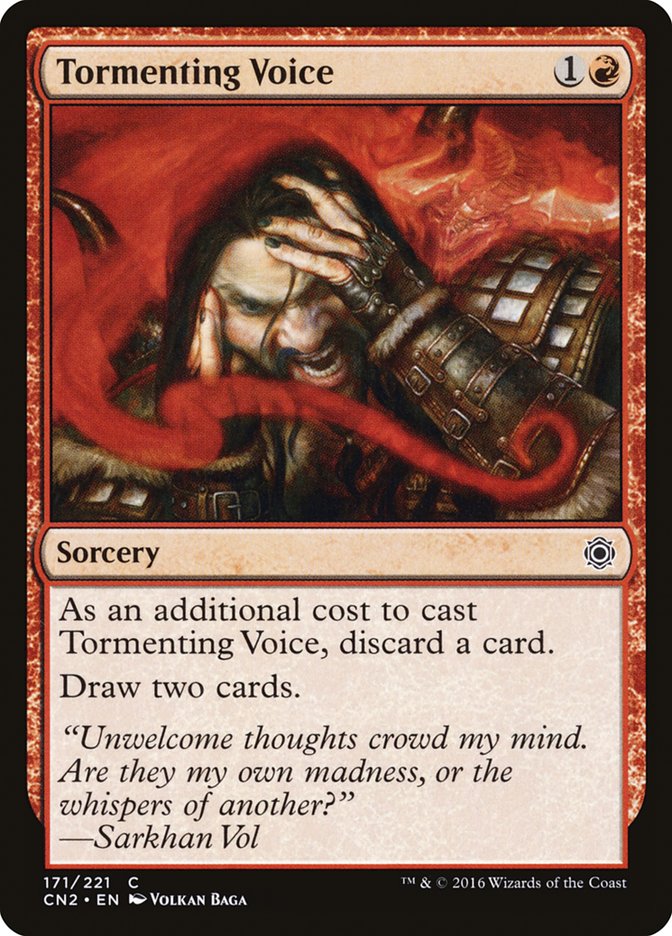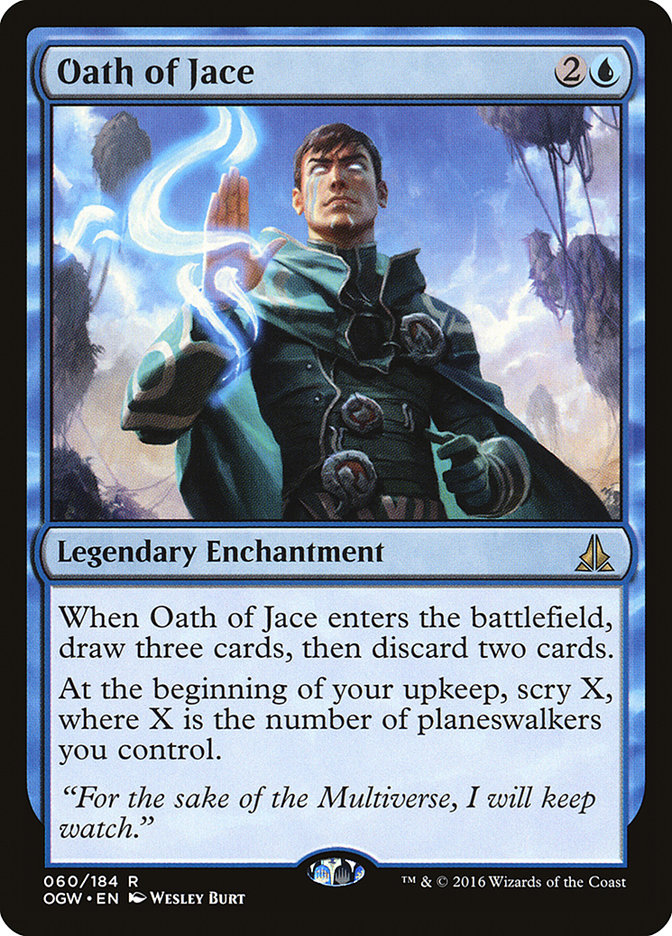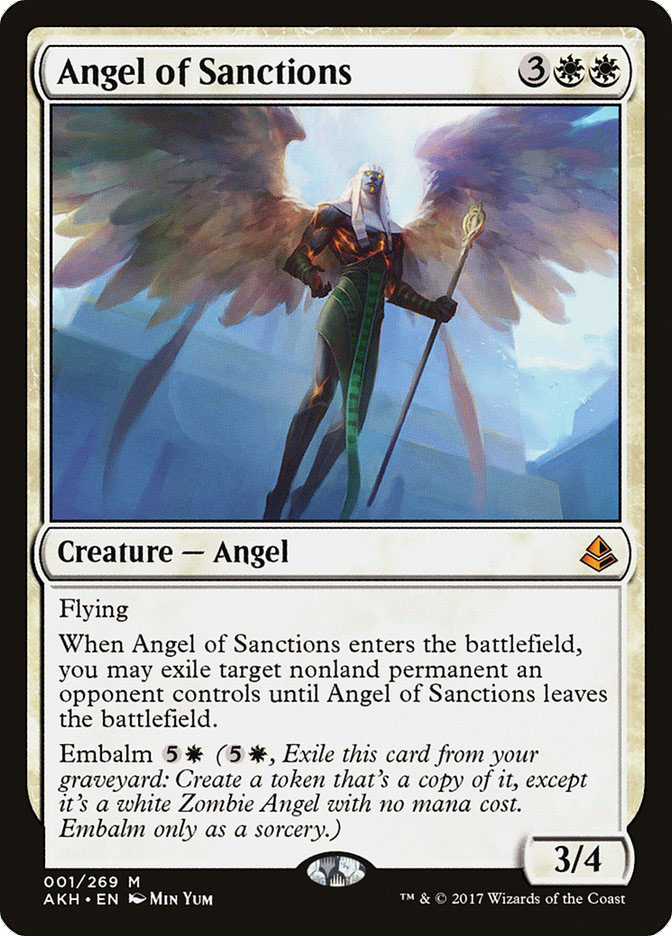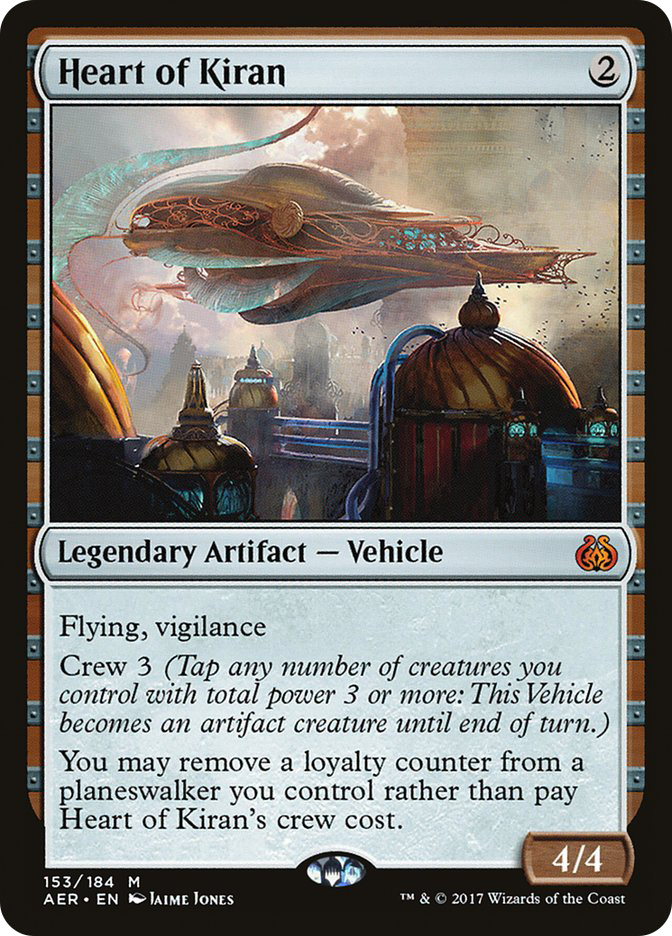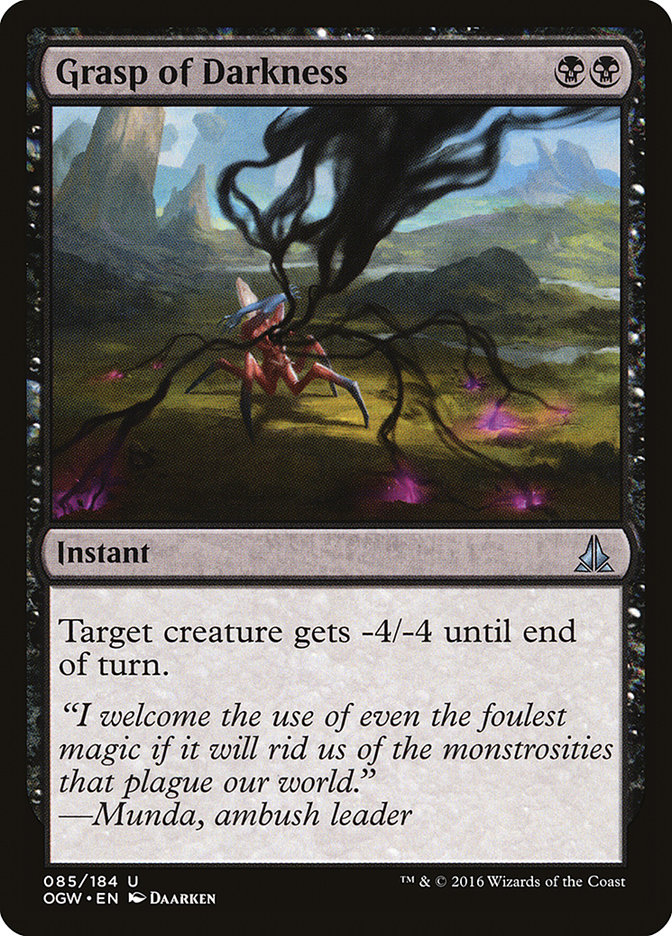We are about halfway through previews of Amonkhet and I have preordered four cards. One of those is Glorybringer, which got called a hit by Ross Merriam, called the answer to Gideon by Todd Anderson, got called a great card and an interesting to play designby me, and probably more. It is probably the worst of the four.
Channeler Initiate is the second of the cards I’ve preordered. Simply put, this is a mana creature that also presents a reasonable body. Even if the progress from creature to threat is slow, it’s worth an actual card in the end. I had similar mana and attacker hopes with Servant of the Conduit, but that failed because 2/2 just isn’t enough, where Channeler Initiate becoming a 2/3 or 3/4 really changes the math.
Beyond the basic application, the first thing I looked for was ways to profitably make this a 3/4 in the mid-game. What throwaway creature can I dump the -1/-1 counters on? The first category was token makers. Eating a Nissa, Voice of Zendikar Plant token and making the 3/4 to defend your planeswalker is a fine play on turn 4 or 5. Targeting your Eldrazi Scion and sacrificing it in response to cast a two-drop and a three-drop on turn 4 with Catacomb Sifter is nice. I don’t think Weaponcraft Enthusiast is actually a good card, but if I’m going down the Cryptolith Rite road, both it and Channeler Initiate are making my deck, and “sacrificing” the 0/1 main body to -1/-1 counters is fine.
Sadly, I don’t think that’s how Magic is actually played these days. More likely, Channeler Initiate will just cast the best four- or five-drop and then turn into a 3/4. Or get cast after Archangel Avacyn as a sacrifice outlet that transforms her into Avacyn, the Purifier and lives through the three-damage sweep as a 3/4.
All of my Archangel Avacyn lists with Channeler Initiate just end up looking like the G/W Tokens decks we have known for years. Here’s a quick modification to the list around half of Team Massdrop played at Pro Tour Aether Revolt.
Creatures (19)
Planeswalkers (7)
Lands (25)
Spells (9)

All I learned putting these cards together is that Dusk//Dawn is very sad Channeler Initiate is a 3/4. It’s very possible tha,t if your configuration of this deck shifts very slightly, Dusk//Dawn is a better sideboard sweeper than Fumigate at winning grindy midrange mirrors, but not right now.
Now on to the interesting stuff: Jund Delirium.
Creatures (15)
Planeswalkers (4)
Lands (24)
Spells (17)

Channeler Initiate layered on Traverse the Ulvenwald gives you similar crazy mana flexibility to Attune with Aether layered on Aether Hub and Servant of the Conduit; unlike those cards, both Channeler Initiate and Traverse the Ulvenwald turn into real cards in the late-game. Between those cards and cycling duals, it seems pretty easy to make a super-consistent deck that minimizes early-game screw and late-game flood in a lot of ways. This is simply an initial try-everything list, but it should quickly become clear what cards do and don’t perform in these shells.
Also, why are we Jund? Well, Jund gives us eight cycling duals, and….
“Furthermore, Delirium and Cycling is a combo because it’s a way to get vario” [continues on for 500 words]–every article in April.
— Patrick Sullivan (@BasicMountain) March 27, 2017
The removal is a bit of a mixed bag. Unlicensed Disintegration is simply an easier-to-cast Murder that might hit off Tireless Tracker Clues. As for Cut//Ribbons, I’m a huge fan just for the Aftermath value despite the removal half being merely okay.
One thing I like about this configuration is how many of these cards deal random incremental damage. On paper, this looks like the kind of thing that in the past has been very successful, as it can rapidly turn the corner from setup or control to closing. This is part of why I’ve leaned towards Glorybringer over traditional Delirium high-end cards.
Let’s talk about planeswalkers. Arlinn Kord is good with Glorybringer but trash otherwise. I’ll save that for the lists with four copies of the Dragon. Liliana, the Last Hope is probably good, but I wanted to try a list with more proactive planeswalkers that actively generate card advantage, where Liliana, the Last Hope’s Raise Dead is a little unreliable. Liliana, Death’s Majesty is a card I want to try out mostly for the play of reanimating Ishkanah, Grafwidow as built-in protection.
This list is not optimized to play against Saheeli Rai combo. In my initial passes of everything. I’m completely ignoring that aspect of the format in favor of figuring out what shells actually work and what new cards are good. Maybe I’ll have to change my removal around, maybe the combo gets banned, maybe the idea fundamentally sucks against the combo, but I don’t care. I’ll figure it out later.
I started with Lay Bare the Heart in my sideboard. Then I realized a ton of the cards I want to discard are legendary, Aetherworks Marvel is the biggest one. For now I’m sticking with Transgress the Mind, but if the target shifts to control decks, I might in turn shift towards Lay Bare the Heart, as it picks off cheap interaction.
On the subject of Aetherworks Marvel, Manglehorn is pretty awesome. The Kismet tap effect buying a turn to answer Aetherworks Marvel is very impactful, as is being tutorable off Traverse the Ulvenwald
Worth noting: the Aether Revolt pseudo-proliferate cards let you choose an opponent’s permanents. Skyship Plunderer can pick off a Channeler Initiate. At the moment, these cards aren’t good enough to see play, but if more ways to distribute -1/-1 counters on your opponent’s creatures show up, one of these cards might start making waves and picking off 0/1 Initiates.
Now back to Amonkhet.
Drake Haven is the third card I preordered, and possibly the best one. What were they thinking?
I used to play a lot of Astral Slide when that deck was legal in Standard. A lot has changed in fifteen years, but the general premise would still be powerful today. Your opponent gets boxed between running into your sweepers or getting buried by incremental card advantage.
Drake Haven represents a bit more direct route to that. While planeswalkers have been printed that would make a traditional sweeper-based strategy less reliable, it turns out creatures with flying are pretty good at managing those. Because your repeated advantage of fliers is also a repeatable resource of attacking them, your opponent also gets buried if they hold back or stumble for just a turn. For basic comparison, one mana for a Shock is normal, but one mana for a 2/2 flier is well above rate.
The key to the Drake Haven deck is going to be what happens when you don’t draw Drake Haven. I’m pretty sure the answer is just cast Torrential Gearhulk, but I’m open to suggestions. Approach of the Second Sun is a card I have my eye on, as just naturally drawing two copies is lethal. Getting seven cards deep in two turns with cycling and Glimmer of Genius is also pretty easy, and surviving with seven extra life isn’t that big a deal. It probably isn’t a good first-week card, but once people start finding the right answer configurations, I expect Approach of the Second Sun to start winning some games.
It is worth noting that, in your non-Drake Haven games the cycling, the effects you have access to aren’t totally blank either. They are answers and threats and lands that all work fine. I wouldn’t say they are great, but you get to play Magic until one of your big threats takes over.
I’m going to hold off on a decklist for Drake Haven control until I see all of the cycling and answer options available. This is a true control deck where these things really matter, and putting up a half-baked version now would do more harm than good.
The one thing I will note: you want to be playing around 27 lands with eight cycling duals, which limits you to Grixis or Esper instead of the traditional Temur or Jeskai. Looking over the discard options Patrick Chapin laid out last week, I’m sad to lose Nahiri, the Harbinger from Jeskai, but I can leave the rest. If you are willing to give up the fifth through eighth best cyclers in your deck for slightly better existing removal options, Jim Davis had a nice-looking Jeskai list last week that I would start with.
There’s also a lot of potential for triggering Drake Haven off normal discard. While there are some flashy combos, I’m not sold on them. Forgotten Creation’s ability to create a Drake for each card in your hand seems slow, as you have to wait a turn, while Olivia, Mobilized for War’s ability to chain Drakes off discard triggers from the last Drake feels like a bit of a win-more, as you still need something initializing it.
I’m mostly interested in using Cathartic Reunion or Tormenting Voice to cycle my non-cycling cards towards my Drake Haven than paying their new “kicker” to make more bodies. These cycling enchantments were always good because each activation brought you closer to another activation, and I want to stick to that continuous grinding methodology.
This isn’t to say I’m opposed to playing true discard outlets with my Drake Havens. I’m just saying that pushes us into topdeck mode, where Drake Haven is probably at its worst.
Regardless of which way you approach it, Drake Haven is an engine with actual payoff. We’ve been burned a lot in the past couple of years by similar cards (Call the Bloodline comes to mind), but the rate of repeat, the tangible impact of a 2/2 flier, and the fact that it is often additive on a cantrip makes Drake Haven the real deal.
The final card I’ve opted to preorder is Angel of Sanctions.
I’ve actually ordered a backup playset to lend to whoever needs them.
I have no idea why other people don’t think this card is absurd.
I don’t care it loses a fight to Heart of Kiran, because that isn’t true. It exiles Heart of Kiran and then beats them.
I don’t care that it can die, because Angel of Sanctions absolutely requires the second kill spell to make the first worth it. If you get hit with the Embalmed Angel Zombie and can’t remove it, you are down a permanent and a removal spell and they still have the Angel attacking you. Oops, that’s not good. You can end up plus a little mana on the exchange, but the amount of resources sunk for that is absurd.
I don’t care that it doesn’t fight Archangel Avacyn heads-up. Archangel Avacyn isn’t a Shriekmaw; this is. Don’t attack into their Archangel Avacyn with your Angel of Sanctions unless you have the kill spell, just like you wouldn’t attack with other creatures in the same spot. Yes, the indestructible trigger has value. No, it isn’t an Oblivion Ring worth of it.
Why did I feature Archangel Avacyn in my G/W deck earlier? I was actively trying to transform it. As a 6/5 Flamebreak Archangel, Avacyn is probably better than Angel of Sanctions, but that takes work. Angel of Sanctions just does its job. If the format is hostile towards Walking Ballista or Channeler Initate, you can just cast this Angel, exile a permanent, and accept your value.
Or you can just play a bunch of great five-drops. That’s always fine.
I’m telling you. Just play Angel of Sanctions. Too many times, I’ve seen people ignore a great midrange creatures just because a solid option already existed. This is going to be yet another one of those until the first weekend people show up and get crushed by it.
In honor of my teammate Ben Weitz, maybe Mono-White Eldrazi is finally worth a shot! Yes, I’m aware this deck is nonsense, but it gets to try out some cool new stuff, including Eldrazi Displacer and Always Watching plus Exert to ignore the lockdown!
Creatures (22)
- 4 Eldrazi Displacer
- 4 Thought-Knot Seer
- 4 Thraben Inspector
- 2 Thalia, Heretic Cathar
- 4 Glory-Bound Initiate
- 4 Angel of Sanctions
Planeswalkers (4)
Lands (25)
Spells (9)

For the most part, it feels like Amonkhet is going to be the kind of set that creeps up on us. The build-arounds are a little more freeform, and the good cards aren’t piles of stats and value like Gideon, Ally of Zendikar. My advice is to just play with things. Something is bound to hit, and the gains from discovering that and restructuring around it will be huge.




